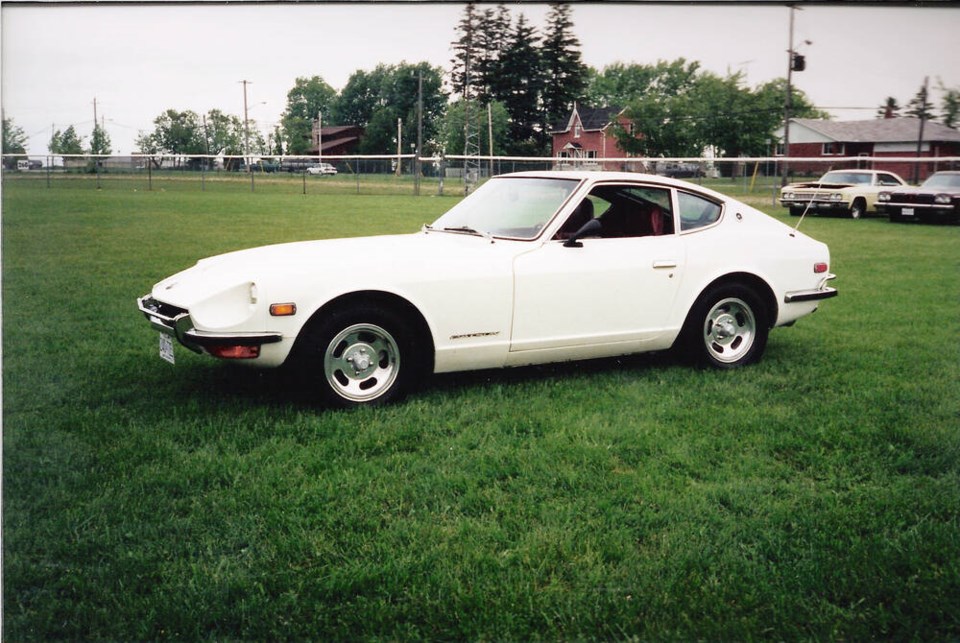The introduction of the Datsun 240Z in 1969 was a significant step in the gradual process of the Japanese takeover of the affordable sports/grand touring market from the British.
In the face of impending safety standards, British Motor Corp. and successors had let the beloved but ancient Austin-Healey expire. It was allowing the famous MG name to die a slow death, although it made a half-hearted attempt at updating the MGB with the six cylinder MGC.
The Triumph TR7/TR8 were in the future, an attempt at a more modern British sports car that showed promise but suffered quality and other problems associated with the decline of the British auto industry. They would not enjoy the hoped-for success.
Other countries like Germany and Italy were producing sports cars, too, but it had been the British that had really established and dominated the North American market for cars that were different, affordable and fun to drive.
When Japan began importing cars to North America, it concentrated on developing and adapting its smaller sedans and pickup trucks to make them suitable for our market. Although Datsun (now called Nissan) had its 1500/1600/2000 Sports models through the 1960s, it had started to think beyond them.
Toyota produced its technically sophisticated 1960s 2000GT, apparently built more as an engineering exercise than a marketing venture. It saw limited production.
And Honda’s tiny 1960s Sports models, culminating with the S800, brought intriguing technology but were too small to have wide appeal.
This was the scene when the Datsun 240Z, called the Fairlady Z in Japan, was announced in 1969. Quickly dubbed the Z-car in North America it sent a signal that the Japanese were now getting serious about entering the sports/GT market.
The 240Z was a bold, technically modern, sharply styled and comfortable grand touring two-seater with sparkling performance, good reliability and an affordable price.
Although Datsun had started it with an almost clean sheet of paper, it kept the price reasonable by using some existing components.
Its engine was a 2,393 cc, single overhead cam, in-line six developing a lusty 150 horsepower at 6,000 rpm. For a slightly lower hood-line it was tilted approximately five degrees to the right.
Acceding to Road & Track’s engineering editor Ron Wakefield in a technical analysis of the 240Z, this engine was “…derived from the 510 engine’s reciprocating parts.” They had used them to stretch the four into a six.
Front suspension was MacPherson struts from the Datsun Laurel sedan, and it also had MacPherson struts at the rear to provide four wheel independent suspension. A constant reminder of this was their upper mounts intruding into the cargo area. Steering was rack-and-pinion and braking was by power assisted front discs and rear drums.
Styling for the unit-construction coupe was a fresh, contemporary design that suggested some Jaguar, Ferrari and Porsche influences. There were not enough to be called plagiarism, just enough to lend the 240 an air of exclusivity.
The two-seater coupe had the requisite long hood, short deck profile. The hood carried a power bulge, and a notable front end styling feature were the Ferrari-ish “sugar scoop” headlamps nestled in nacelle-like surrounds.
The interior offered full carpeting, comfortable seating for two and room for a reasonable amount of luggage. The driver had full instrumentation including a tachometer and oil pressure gauge.
Aware of the demands of the North American market, in addition to the four speed manual, Datsun made an automatic transmission and air conditioning available from the beginning.
The 240’s specifications impressed the motoring press. Road & Track called the Z “a real winner” on its first encounter. After a full test they concluded that it set “new standards of performance and elegance for medium-priced two-seat GT cars.”
In its test R & T (4/70) reported the 1,068 kg (2,355 lb) four-speed coupe’s performance was fully competitive in its class. It accelerated to 97 km/h (60 mph) in 8.7 seconds and reached a top speed of 196 km/h (122 mph), excellent for the day. They called it “clean, crisp and contemporary,” and concluded that its combination of styling, performance and handling was a “super-bargain,” far ahead of anything else under $4,000.
The buying public agreed and close to 20,000 Z-cars were shipped to North America in 1970. That figure would rise to annual sales in the 50,000 range by 1973, the 240’s last year.
The Z-car evolved into larger and more powerful 260Z and 280Z versions, with ultimate production exceeding half a million by the time they were replaced in 1978 by the ZX series. The 240Z set a new standard for sports-GT cars, consolidated the Japanese as a power in that market, and set the stage for cars like the rotary powered Mazda RX-7 and the very popular Mazda Miata.



